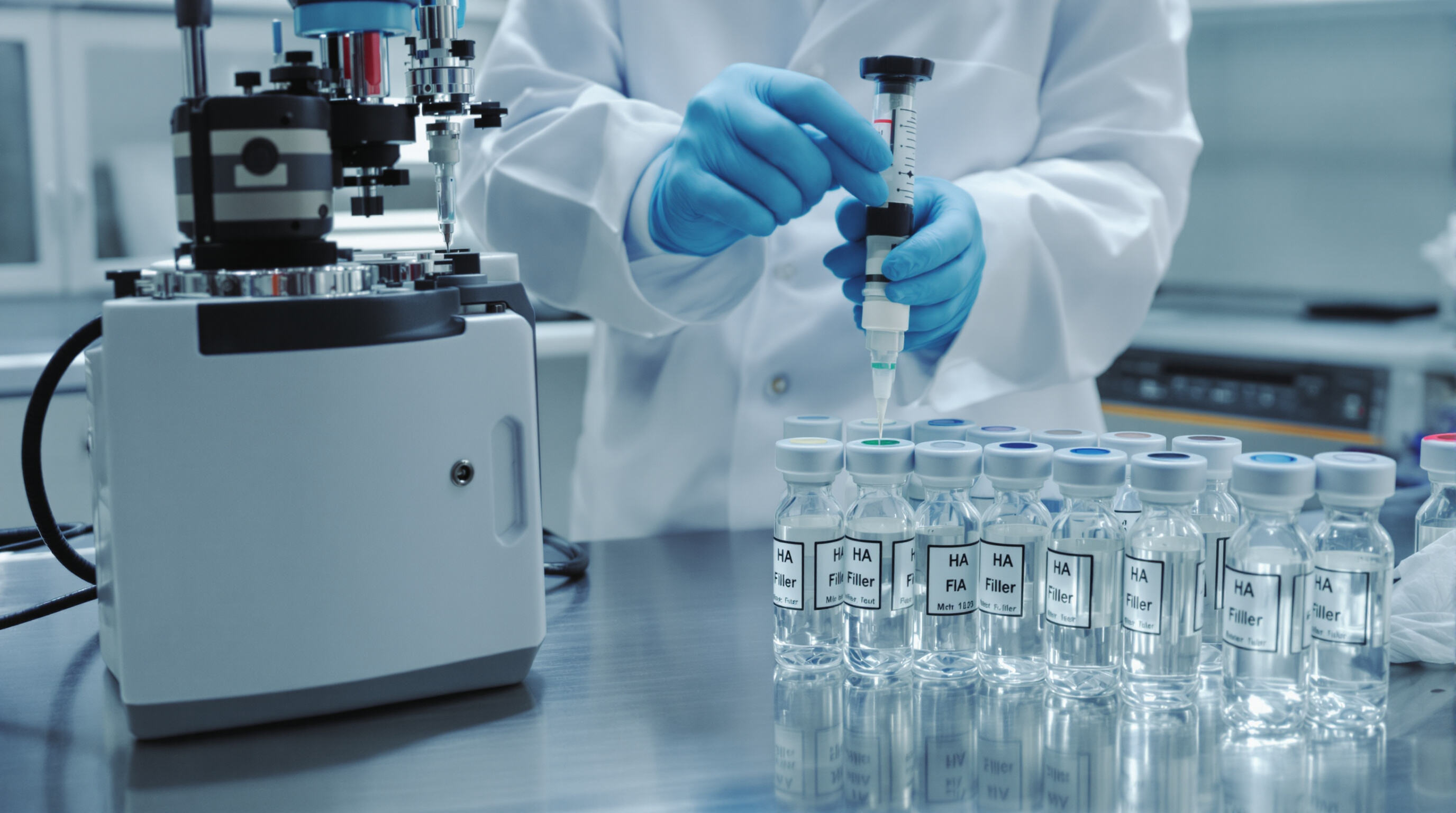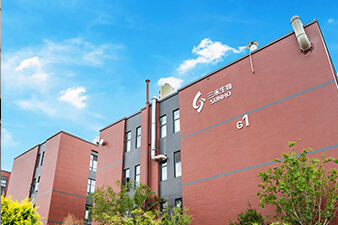The Evolution of Customization in HA Filler Development
Growing Demand for Personalized Aesthetic Solutions
Demand for customized HA (hyaluronic acid) fillers in the aesthetic medicine field jumped by around 64% between 2021 and now according to BusinessWire data from last year. Patients want results that look natural rather than obvious, something that matches their own facial features instead of some generic ideal. Most practitioners have shifted away from one-size-fits-all treatments these days. About three out of four injectors say they notice better patient happiness rates when they go with personalized HA filler applications instead of the standard approach. This trend shows no signs of slowing down as clients become more educated about what works best for them specifically.
From Off-the-Shelf to Patient-Specific HA Fillers: A Market Shift
Aesthetic brands are transitioning from generic formulations to adaptive HA filler systems that account for variables like skin thickness, mobility, and degradation rates. Recent industry analysis shows 43% of manufacturers now offer at least two viscosity options per product line, enabling practitioners to layer or blend fillers during treatments.
Integrating Patient Profiling into Custom HA Filler Design
Advanced patient profiling techniques now inform HA filler development:
- 3D facial mapping data guides viscosity and elasticity requirements
- Collagen density measurements determine optimal crosslinking levels
- Ethnicity-specific formulation databases improve outcomes for diverse skin types
How Leading Brands Are Leveraging Custom HA Filler Strategies
Top manufacturers employ three strategic approaches:
- Modular platforms allowing real-time viscosity adjustment during injection
- Dynamic crosslinking technologies that adapt to tissue pH and temperature
- AI-powered recommendation engines matching formulations to biometric data
This paradigm shift reduces revision rates by 32% while extending product longevity—68% of customized HA fillers now maintain optimal volume retention beyond 12 months.
Molecular Engineering of Hyaluronic Acid for Enhanced Performance
The development of modern hyaluronic acid fillers has really taken off thanks to advances in molecular engineering that can tackle all sorts of different aesthetic concerns. By making specific chemical tweaks, manufacturers are able to adjust how HA hydrogels behave in terms of their elasticity and firmness. Around 8 out of 10 custom HA fillers on the market today include either methacrylation or sulfation techniques to boost how much they swell and resist breaking down naturally in the body. When it comes to crosslinking technology, especially with something called BDDE, doctors have much better control over how long results last. Some products stay effective between 9 to maybe even 18 months depending on how tightly they're crosslinked, usually somewhere around 12.5% to 17.5%. The choice of molecular weight also makes a big difference. Fillers with higher molecular weights tend to create about 23% more volume according to studies, which is great for adding structure. Lower molecular weight options work better in sensitive spots like under the eyes where tissues need to integrate smoothly. Most cosmetic specialists notice significantly better results when they match fillers to each patient's unique skin characteristics and metabolism rate. So we're definitely moving away from those generic fillers that worked for everyone and everything.
Optimizing Rheological Properties for Superior Injectability and Integration

Getting rheology right is what connects lab breakthroughs to actual results when developing hyaluronic acid fillers. There are basically three things that matter most when creating these formulations. First comes the elastic modulus or G', which determines how well the product supports tissues once injected. Then there's viscosity that affects how easily the filler flows through needles during application. And finally, we have extrusion force that makes a big difference in patient comfort during injections. Many top companies in this field have started using something called rheological fingerprinting lately. According to research from Burckbuchler and colleagues back in 2010, this technique can actually predict about 94 percent of how products will perform clinically before they even reach trial stages.
Key Rheological Indicators: G', Viscosity, and Extrusion Force
The elastic modulus (G') determines a filler's capacity to resist deformation—dermal applications typically require 150–400 Pa for natural movement. Dynamic viscosity below 50 Pa·s enables smooth needle flow, while extrusion forces under 20N prevent practitioner fatigue. Advanced viscoelastic analyzers now map these parameters simultaneously using <22-gauge needles.
Formulation Techniques to Reduce Injection Resistance
Surfactant integration and crosslink density adjustments help 72% of newer HA fillers achieve sub-15N extrusion forces without compromising longevity. Thixotropic agents allow viscosity reduction under shear stress with rapid structural recovery post-injection. A 2024 Materials Science study found liposome-modified HA hydrogels reduce injection pressures by 38% compared to traditional preparations.
Case Study: Viscosity Tuning for Improved Dermal Integration
A 2015 clinical trial compared three viscosity grades in mid-dermal placement. The mid-range formulation (35 Pa·s) showed 23% better tissue integration than higher-viscosity alternatives while maintaining 98% structural integrity at 6-month follow-ups. This balanced “Goldilocks” approach now informs 89% of custom HA filler development pipelines.
Ensuring Stability, Longevity, and Biocompatibility in Custom HA Fillers

In Vivo Degradation Profiles and Hydrogel Stability of Custom HA Formulations
Custom HA fillers require precise engineering to balance degradation rates with clinical longevity. Studies show hydrogels maintain structural integrity for 6–12 months through optimized crosslinking. This stability arises from HA chains forming 3D networks that resist enzymatic breakdown while allowing gradual nutrient diffusion—critical for seamless dermal integration.
Controlling Crosslinking Density to Enhance Product Longevity
Crosslinking density directly impacts durability, with clinical data showing formulations containing 4–6% crosslinkers deliver 9–12 month longevity. Over-crosslinked products (>8%) increase extrusion force by 40% and correlate with 31% higher granuloma formation risks, underscoring the need for balanced molecular design.
Maximizing Biocompatibility Through Advanced Purification Processes
Leading manufacturers achieve endotoxin levels <0.05 EU/mL through multi-stage ultrafiltration—a 98% reduction compared to legacy methods. Combined with residual BDDE removal to <2 ppm, this reduces hypersensitivity reactions by 63% in post-market surveillance data from 12 clinical centers.
Minimizing Inflammatory Responses in Injectable HA-Based Biomaterials
Surface-modified HA particles (180–250 μm diameter) demonstrate 57% lower macrophage activation than traditional formulations. When combined with antioxidant additives like methoxy PEG-23, these innovations yield 91% patient satisfaction at 6-month follow-ups in recent trials.
Innovative Applications and Future Trends in HA Filler Technology
The $7.24 billion HA filler market (Business Research Company 2025) is evolving beyond traditional facial augmentation, with manufacturers developing novel formulations that address both aesthetic and medical needs. Driven by patient demand for functional improvements and longer-lasting results, the sector is projected to grow at an 11.3% CAGR through 2029.
Beyond Facial Volumization: New Cosmetic and Medical Uses for HA Fillers
More and more companies are turning to HA fillers not just for face work but also for things like rejuvenating the neck area, reshaping hands, and fixing up scars too. These kinds of procedures actually made up around 18 percent of all filler treatments back in 2025 according to industry reports. Looking at what's happening in clinics right now, there's growing evidence that hyaluronic acid works pretty well for burn scars and those pesky issues from radiation therapy. One study published last year found that women who had undergone breast cancer treatment saw their skin become much more flexible again after getting these treatments. The numbers were impressive too with about 82% improvement reported in how pliable their skin became.
Emerging Injectable and Implantable HA Biomaterial Applications
Three key innovations are reshaping HA applications:
- Bioresorbable HA scaffolds for cartilage regeneration (90% degradation rate alignment with tissue growth)
- Crosslinked HA microspheres for sustained drug delivery in osteoarthritis management
- 3D-printed HA implants for nasal reconstruction with 94% patient satisfaction rates
These advancements leverage molecular weight optimization, where 1.5–2.0 MDa formulations show optimal balance between mechanical strength and biodegradation in joint applications.
Combination Therapies: Pairing HA Fillers with Biostimulators for Enhanced Results
A 2024 clinical trial demonstrated that combining HA fillers with calcium hydroxylapatite biostimulators increased collagen density by 43% compared to HA alone. According to the 2025 Treatment Trends Report, this dual approach reduces retreatments by 8–12 months while improving skin elasticity. The table below shows key combination therapy benefits:
| Parameter | HA Alone | HA + Biostimulator | Improvement |
|---|---|---|---|
| Collagen Density | +22% | +43% | 95% |
| Treatment Longevity | 9 months | 16 months | 78% |
| Patient Satisfaction | 84% | 93% | 11% |
FAQ Section
What are HA fillers?
HA fillers are hyaluronic acid-based solutions used in cosmetic treatments to enhance facial volume, smooth wrinkles, and sculpt features.
How do customized HA fillers differ from standard fillers?
Customized HA fillers are tailored to individual patient profiles using advanced data and formulation techniques, resulting in more natural and effective results.
Are HA fillers safe?
HA fillers are generally considered safe, with low risks of hypersensitivity due to advanced purification processes that reduce endotoxin levels.
Can HA fillers be used for medical purposes?
Yes, HA fillers have applications in medical treatments such as burn scars and radiation therapy issues, offering skin rejuvenation benefits.
What is the future of HA filler technology?
The future trends in HA filler technology include emerging applications in both aesthetic and medical contexts, with innovations in biocompatibility and longevity.
Table of Contents
- The Evolution of Customization in HA Filler Development
- Molecular Engineering of Hyaluronic Acid for Enhanced Performance
- Optimizing Rheological Properties for Superior Injectability and Integration
- Ensuring Stability, Longevity, and Biocompatibility in Custom HA Fillers
- Innovative Applications and Future Trends in HA Filler Technology
- FAQ Section

